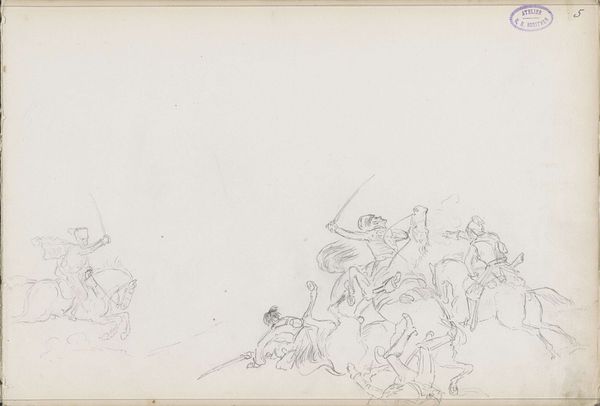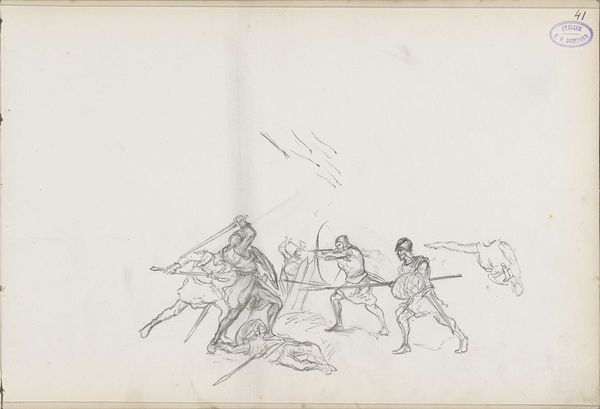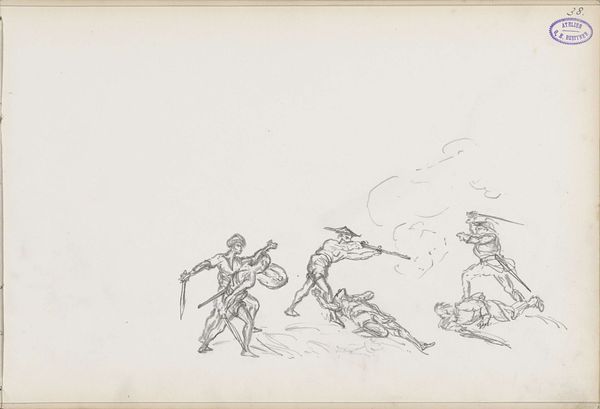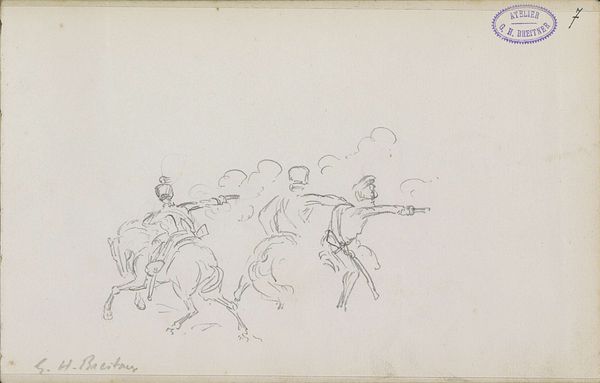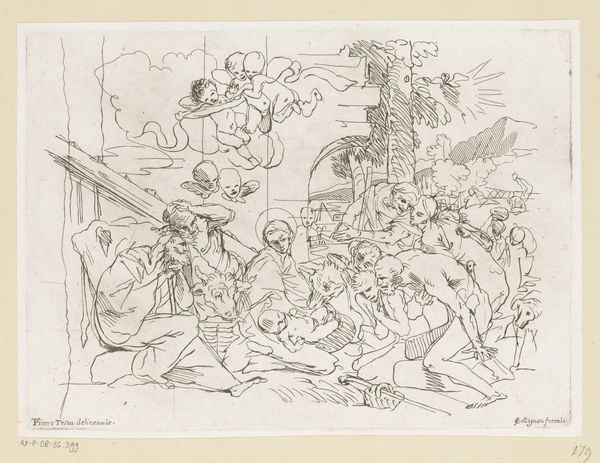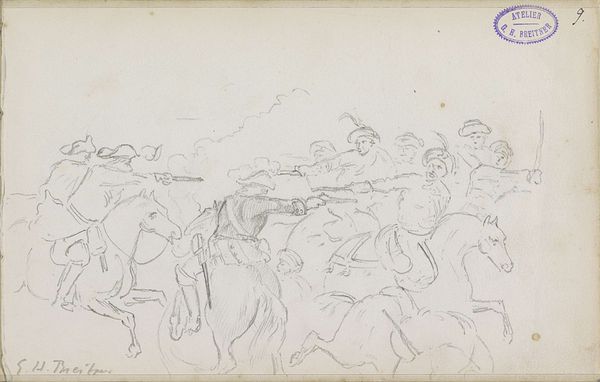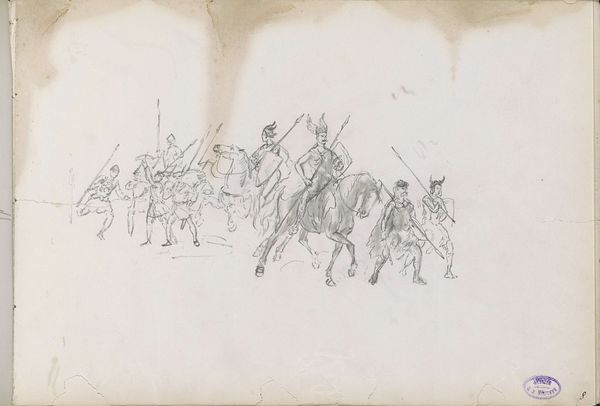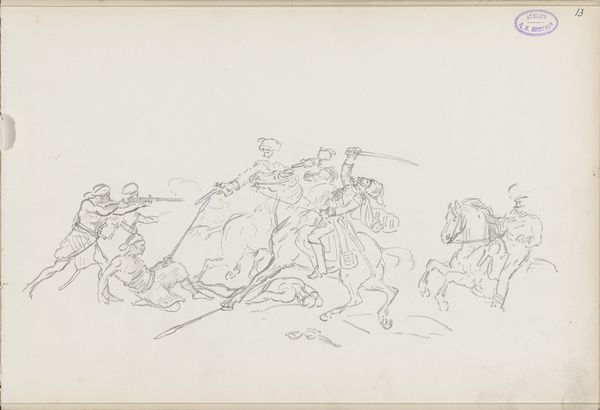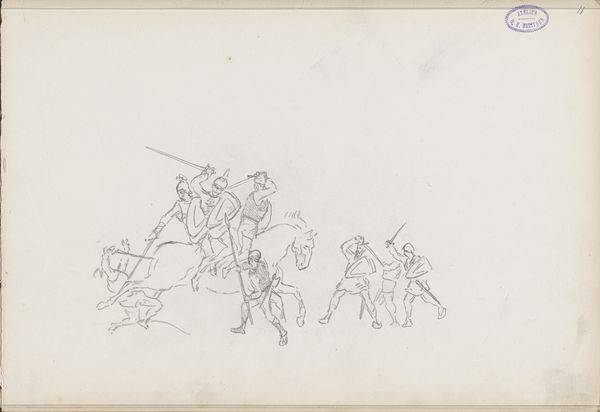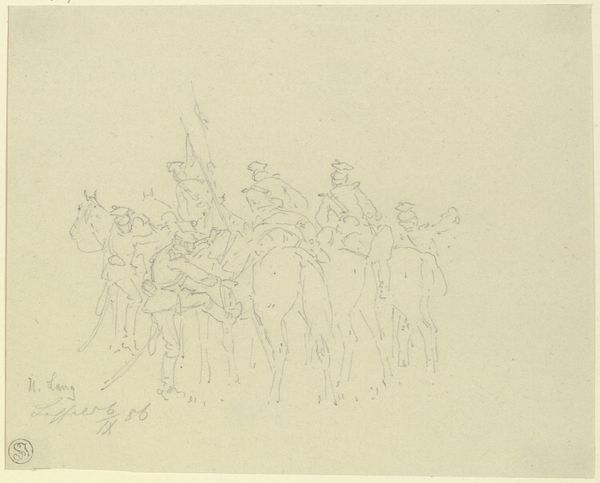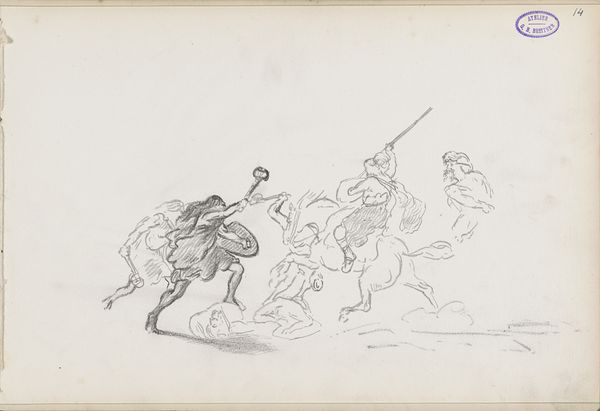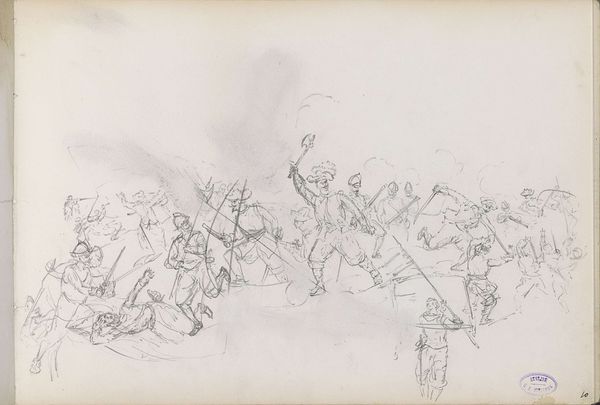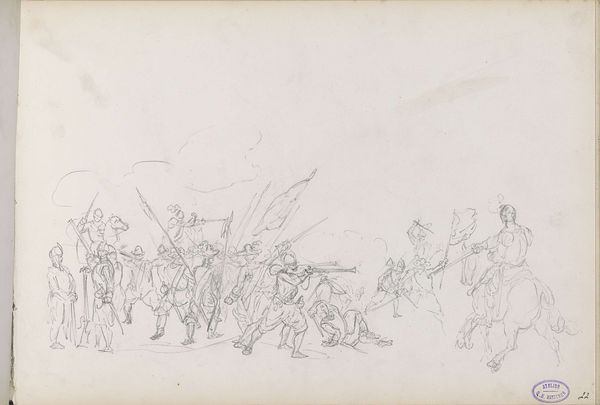
Soldaten met opgeheven wapens op galopperende paarden c. 1871 - 1876
0:00
0:00
georgehendrikbreitner
Rijksmuseum
Dimensions: height 134 mm, width 209 mm
Copyright: Rijks Museum: Open Domain
Editor: We are looking at "Soldiers with Weapons Raised on Galloping Horses", a pencil and pen drawing made between 1871 and 1876 by George Hendrik Breitner. It's so full of movement, but also feels like a quick snapshot. What historical contexts do you think influenced a sketch like this? Curator: This drawing comes from a period where history painting was increasingly scrutinized. The rise of Realism demanded a shift away from romanticized historical narratives. Consider the Franco-Prussian War, concluded just before this work; war's realities clashed starkly with heroic depictions. Breitner, though, seems caught between the grand tradition and a more immediate, perhaps even journalistic, approach. What is it that gives you that sense of immediacy? Editor: Maybe the unfinished quality? It's not polished, you see the lines where he was figuring things out. It feels like he’s trying to capture a feeling rather than illustrate a specific event. Curator: Exactly. It’s less about glorifying combat, and more about exploring the dynamism and energy of conflict. Think of the shifting public perception of military power at the time. The old certainties were eroding. How do you think the social function of art changed, reflecting these perceptions? Editor: Perhaps it was starting to question rather than celebrate? This sketch isn't propaganda. It feels more like… observation. Curator: Precisely! Artists began documenting the world around them with a critical eye, moving away from the idealization that characterized much of earlier history painting. The art market itself was changing too, valuing immediacy. What does that tell us? Editor: Maybe people wanted art that reflected their own uncertainties and experiences, rather than grand, unachievable ideals? Breitner provides a glimpse into a society questioning its own narratives. It really makes you think about how art functions within larger social shifts. Curator: Indeed. By considering the artwork in relation to contemporaneous historical events and broader cultural attitudes, we gain a richer understanding not only of its aesthetic qualities, but its public role.
Comments
No comments
Be the first to comment and join the conversation on the ultimate creative platform.
